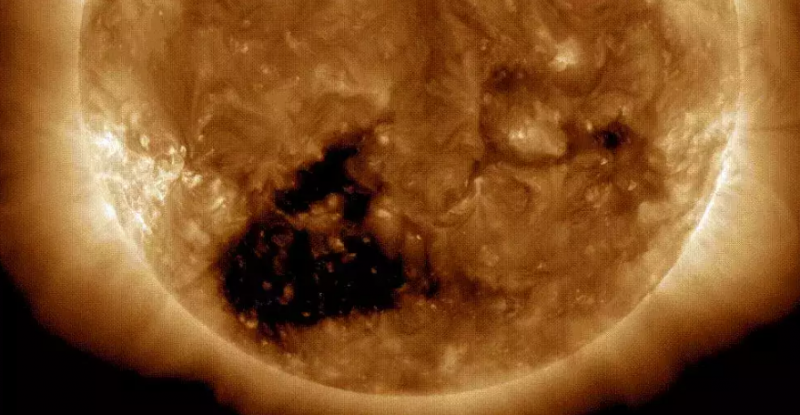
USA: NASA's Solar Dynamics Observatory discovered a large hole on the Sun known as Coronal Hole (SDO). Twenty to thirty Earths could fit inside the giant hole.
Coronal holes are imaginary holes that do not exist on the surface of the Sun. They appear dark on the solar surface and shine less brightly than their surroundings because they are cooler.
As it approaches the peak of its current solar cycle, known as solar maximum, which is estimated to occur in 2025, the Sun is currently more active than it has been in the past ten years.
Also Read: PM launches 6G vision Doc, inaugurates ITU Area Office, Innovation Centre
During this active period, as more spots develop on the Sun, solar flares can occur, which can disrupt power grids and communications systems.
The upper atmosphere of the Sun contains holes, which are normal and a part of the regular activity of the Sun. Although they are referred to as the "dark side" of solar activity, they are not well understood.
Also Read: The Space Launch System (SLS) of NASA is the strongest rocket ever created
Electrical blackouts can be brought on by strong solar magnetic field explosions called coronal mass ejections (CMEs), but coronal holes are much less dangerous.
Coronal holes enable a greater flow of the solar wind, a stream of charged particles that can travel at speeds of 500–800 km/s. On March 24, Earth will experience aurora at higher altitudes due to a recently discovered coronal hole.
According to the National Oceanic and Atmospheric Administration (NOAA). Such coronal holes have caused auroral displays in the past in Idaho and New York.
On March 24, we'll start to notice the effects of the stronger wind, according to Scott McIntosh, deputy director of the National Center for Atmospheric Research, in a statement to Business Insider.
The magnetic field and the particles carried by the high-speed wind will interact with the Earth's magnetic field when it effectively accelerates or warps the planet," Mackintosh elaborated.
Also Read: Google has finally released Bard, its AI-powered chatbot, in response to OpenAI's ChatGPT
The Sun's north pole was recently being swept by a massive "tornado," as observed by SDO. On March 18, the Sun's surface was covered with a thick layer of boiling plasma, which rose to a height of about 120,000 km.
When the tornado subsided, fortunately the ejected material did not fly towards the Earth. Despite the fact that most solar activity is benign, NASA and other organizations keep a close watch on the Sun for its safety.